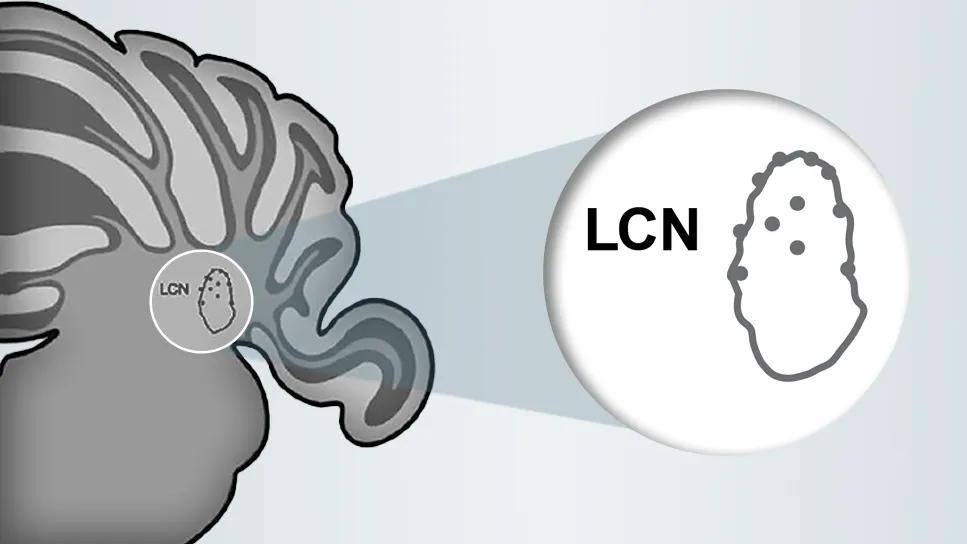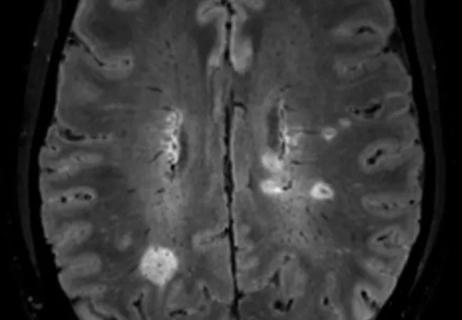Promising preclinical research indicates functional motor recovery is durable

Deep brain stimulation (DBS) of the lateral cerebellar nucleus (LCN) in a rodent model of traumatic brain injury (TBI) can lead to motor recovery that persists at least two weeks after treatment is deactivated. In addition, DBS results in increased expression of cellular proteins associated with neural recovery in the central nervous system, an indicator that brain reorganization is occurring. So reported a team of Cleveland Clinic investigators in a recently published preclinical study in Neurorehabilitation and Neural Repair (2024;38[11-12]:808-809).
Advertisement
Cleveland Clinic is a non-profit academic medical center. Advertising on our site helps support our mission. We do not endorse non-Cleveland Clinic products or services. Policy
“Unlike DBS for Parkinson’s disease and essential tremor, which requires continuous application to obtain benefit, our findings indicate that treatment for TBI can lead to neurologic changes that can be long lasting,” says lead author Kenneth Baker, PhD, a researcher in the Department of Neurosciences at Cleveland Clinic. “They suggest that DBS could be conducted on TBI patients until a new functional plateau is reached and then stopped.”
Previous research by Dr. Baker and coinvestigator Andre Machado, MD, PhD, demonstrated that DBS of the LCN in a rodent model of TBI — performed for four weeks following recovery from the injury — led to both motor (Brain Stimul. 2018;11[6]: 1356-1367) and cognitive (Exp Neurol. 2022;355:114136) recovery. These trials did not evaluate the persistence of benefits after stimulation was discontinued.
These preclinical findings are consistent with research by the same group on the use of DBS to the cerebellar dentate nucleus (the human homologue of the rodent LCN) for motor recovery in patients with chronic stroke disability. A phase I feasibility trial (Nat Med. 2023;29[9]:2366-2374) has been completed and a multicenter phase II trial testing DBS plus physical rehabilitation is currently underway (NCT05701280). Preliminary results of these first human trials of DBS of the dentate nucleus for stroke rehabilitation support the treatment’s safety, feasibility and association with clinically significant improvement.
The current research investigating the durability of functional improvements after DBS for TBI was conducted in a rodent model of TBI. After four weeks of baseline training and assessment, male rats underwent a controlled cortical impact injury targeting the sensorimotor cortex. After a two-week recovery period, they were implanted with a macroelectrode in the LCN on the opposite side of the injury. Two weeks after implantation, they were randomized to either continuous DBS (n = 7) or sham treatment (n = 7) for four weeks.
Advertisement
After DBS was deactivated, all rats underwent motor performance assessment over the subsequent two weeks to assess carry-over effects. Motor behavioral testing included the pasta matrix test, cylinder test and horizontal ladder walking test of the forelimb and hindlimb. Animals were then euthanized and brain tissue analyzed.
During DBS stimulation, treated rats gained significantly greater motor improvement across all metrics compared with untreated rats. Therapeutic gains were maintained across the two-week post-treatment period.
At autopsy, upregulation of the following two proteins of interest was evident in the perilesional cortex in the treated group:
These proteins are involved in a positive feedback loop that enhances cellular growth, survival and memory formation.
“Our findings show that, once achieved, benefits from DBS appear to be maintained after stimulation is stopped,” Dr. Baker says. “Knowing this is important for trial design and the development of therapy protocols for patients with acquired brain injury.”
He notes that for patients with Parkinson’s disease, essential tremor and certain other movement disorders, initiation of DBS has immediate effects in those who derive benefit from the therapy and that the benefits abruptly cease if DBS is stopped. In contrast, in stroke patients and TBI rodent models, the investigative team has observed that benefit progresses over time until a plateau is reached and is sustained after stimulation stops.
Advertisement
“This pattern of the timing of gain and maintenance of benefits — and the increase in proteins associated with brain recovery adjacent to the injury — suggests strongly that DBS in stroke and TBI patients promotes durable functional reorganization of the brain,” Dr. Baker explains.
He adds that the team is currently seeking regulatory approval for a phase I clinical trial of DBS for motor recovery in patients with chronic TBI. At the same time, they are further refining the use of DBS in rodent models for investigating clinically relevant cognitive recovery in anticipation of future clinical trials.
“Being able to offer effective therapy long after a brain injury could be a game changer for these patients,” Dr. Baker says. “This research supports brain plasticity and the potential for recovery beyond the point when disability is traditionally considered to be permanent.”
Advertisement
Advertisement

EDEN analysis investigates electrophysiological changes after continuous dentate nucleus stimulation

New guidelines from Brain Trauma Foundation urge early and aggressive treatment

Despite less overall volume loss than in MS and NMOSD, volumetric changes correlate with functional decline

Researchers pair quantitative imaging with AI to improve surgical outcomes in nonlesional epilepsy

Cleveland Clinic researchers collaborate with Microsoft to create a product ready for the field

$3.2 million grant will fund use of calcium-based imaging to record neuronal activity in ischemia model

New reports focus on neuroimaging biomarkers and features of atypical presentations

Case report of a young man with severe traumatic brain injury and cognitive deficits